ESSAY
Pavilion!?
Spatial determination within the curatorial discourse of national representations in the Venice and São Paulo art biennales
Researchers at the Instituto de História da Arte da Faculdade de Ciências Sociais e Humanas, Universidade Nova de Lisboa
May 2016With its first edition in 1895, the Venice Biennale can essentially be explained by its organisation into national pavilions. Up until 1907, the year in which the first pavilion was built (for Belgium), the pieces included in the Biennale were exclusively shown at the Exhibition Palace, erected in the Giardini. The rooms displayed works by Italian artists sorted by region of origin, along with foreign artists already arranged by country. With the objective of increasing international representation, which at the time was scarce, and of relieving the Venetian organisation of the cost of foreign participation, the Biennale encouraged the construction of national pavilions following the model and logic of the great universal exhibitions in which nation-states produced symbolic materials that formed a precept of their self-veneration. The devices used for the presentation of the objects varied from modest stands in communal pavilions to the construction of isolated pavilions, essentially standing as “monuments” of propaganda.
The São Paulo Biennale started in 1951, representing the second of its kind in the world. Its subsequent editions were headed by a rotation of directors, mainly chief-curators, and their organisational logic was divided into ‘general rooms’ and ‘national representations’. Following the initial Venetian model of one single pavilion, the event was initially implanted into the esplanade of the Trianon, on Avenida Paulista, and then into the Pavilhão Manuel da Nóbrega in the Óscar Niemeyer Ibirapuera complex, finally finding its permanent home in the Pavilhão das Indústrias, now known as the Ciccillo Matarazzo Pavilion.
It is important to underline the geopolitical topography of the Venice and São Paulo models, where the difference can be found in the architecture of the buildings selected, in order to understand the development of the model for national representations and to substantiate that São Paulo, from a certain point onwards, began to question it, finally terminating its existence in 2006.
The model for national pavilions begins to be questioned in Venice, starting in the 1960’s, with the denunciation of the obsolescence and academicism of the pavilions, the economic despotism of the Giardini and the impossibility of a conceptual unity for the exhibition. These objections escalated with the student uprisings of 1968, which accused the Biennale of making politically biased artistic selections in connection with diplomatic negotiations for the selection of the artists and allocation of prizes, of privileging the market over critical discourse and for being rooted in an out-dated and conditioning exhibition model. Following these developments, art historians Gillo Dorfles and Germano Celant, along with many others, proposed that the pavilions be demolished, but this radicalism was stonewalled by the fact that the pavilions belonged to the nations that built and maintained them, functioning as embassies under the principle of extraterritoriality, making it legally impossible for the Biennale to interfere.
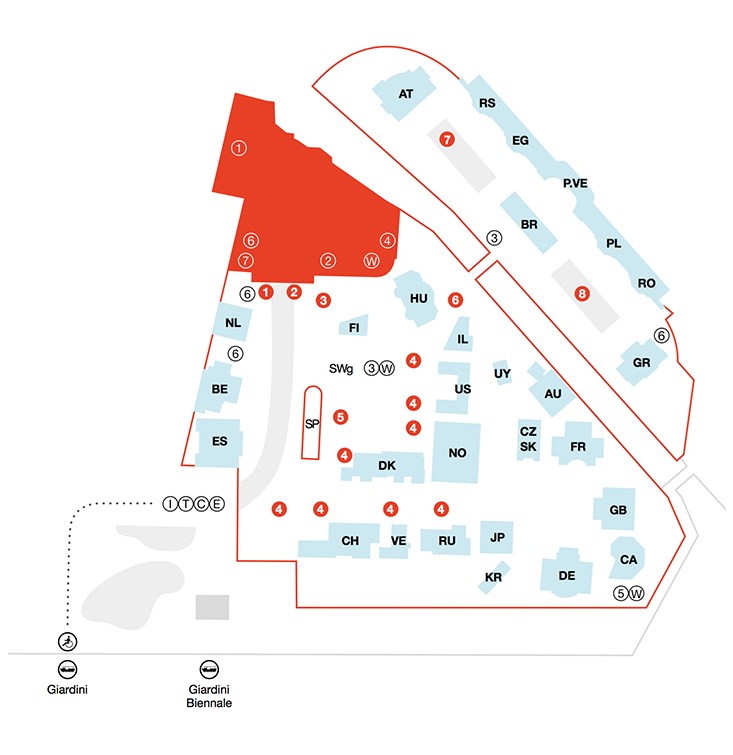
Source: La Biennale
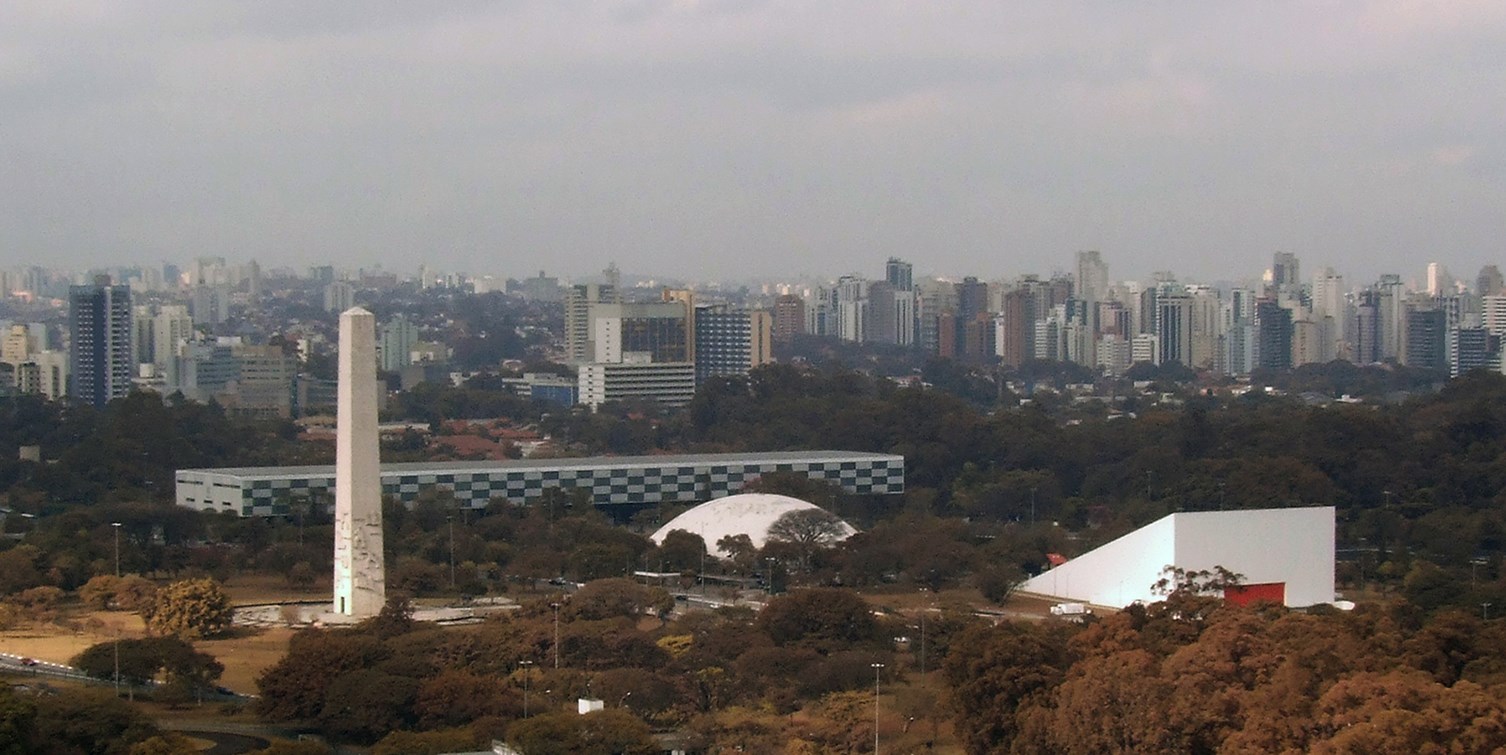
©Sergio Valle Duarte - own work, CC BY 3.0
The single-pavilion model for national representations in São Paulo allowed for the elimination of power relations between the participating countries by extinguishing the architectural competitiveness present in Venice, as well as the channelling of investment towards the work, instead of towards the renting or construction of exhibition spaces. However, the juxtaposition of the work, the size of occupation of the common space and the distribution of each national compartment in the general layout of the exhibition revealed supremacy of resources and favouritism in the form of strategic neighbouring, thus perpetuating the political and economic distinctions of the participating countries. It is based on these conditions that a discussion analogous to the one that took place in Venice flares up in São Paulo. In 1967, a group of art professionals submitted a document with the title ‘For a restructuring of the São Paulo Biennales’, informing the institution of some of the problems that had been verified in Venice, including, among others, the axial determination of the ‘national representations’ in the development of the exhibition, especially considering the weak reliability of the inclusion and exclusion criteria inherent to diplomatic selections. Significantly more politicised, the Non à la Biennale de São Paulo, produced in Paris in June 1969 and appealing to the boycott of foreign countries to the 10th edition in light of violent Brazilian censorship; and Contrabienal, published and disseminated thereafter by a group of North and Latin-Americans headed by Gordon Matta-Clark, provided continuity to the revolt, leading to the absence of the French and North-American representations. With the end of the Brazilian dictatorship, the presence of the national representations was continuously discussed. The editions directed by Walter Zanini and Sheila Leirner (1981 and 1987) were innovative in their curatorial format, introducing a criteria of artistic language analogy into the organisation of the exhibition in order to overcome the financial determinism of keeping the individual category.
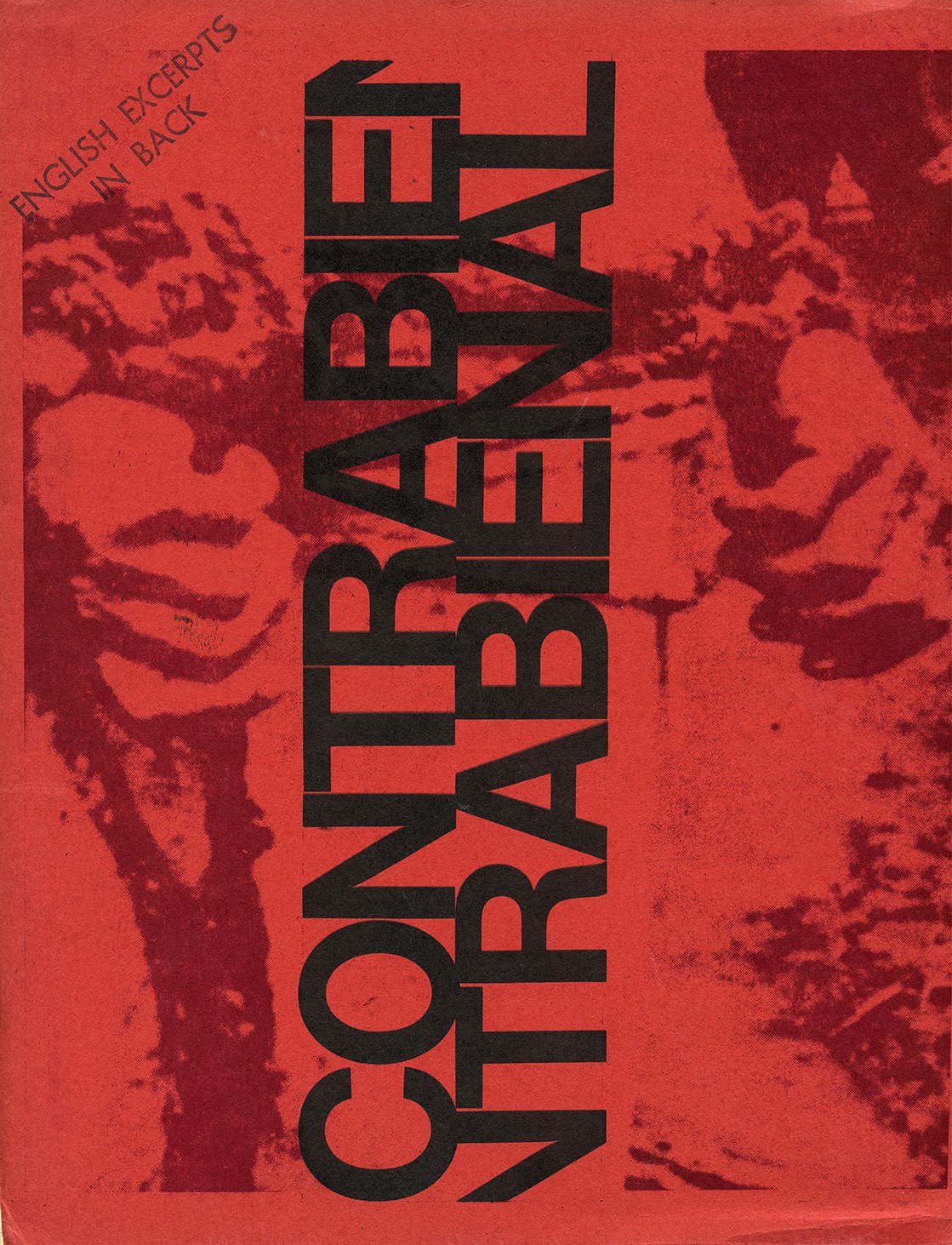
Source: http://unmismosol.info/blog/nosotros-estamos-aqui
Also in Venice, and after 1989, some general curators tried to update the Biennale and make its pavilion-centred organisation viable, selecting themes that stimulated reflections on transnationalism. In the 1993 edition, Achille Bonito Oliva specifically asked the pavilion curators not to use provenance and place of birth as criteria in the selection of participating artists. Consequently, Germany invited Nam June Paik, a Korean-born German resident, along with Hans Haacke, a German living in the United States of America, and the pavilion won the Golden Lion. Haacke uprooted the marble pavement of the pavilion and smashed it to pieces, making the pavilion the embodiment of his intervention, and the German pavilion, with its history and reconstruction by the Nazis in 1938, the instrument for questioning the instability of the space of nations. Through Haack’s work, for the first time in Venice, the national pavilion had become an object of investigation. However, the radical nature of this gesture remains to date a rare and isolated example.
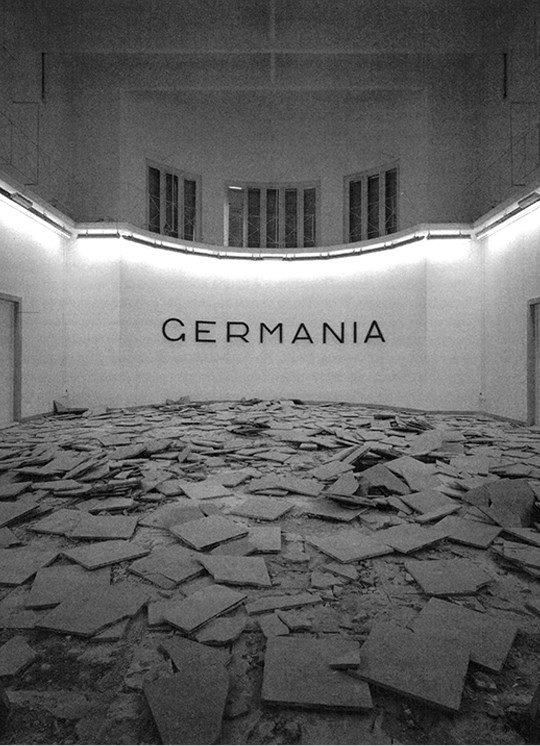
Interior view of the German Pavilion, Biennale de Venezia 1993
©Roman Mensing / artdoc.de
Source: http://www.artdoc.de/html/venedig1_2.html
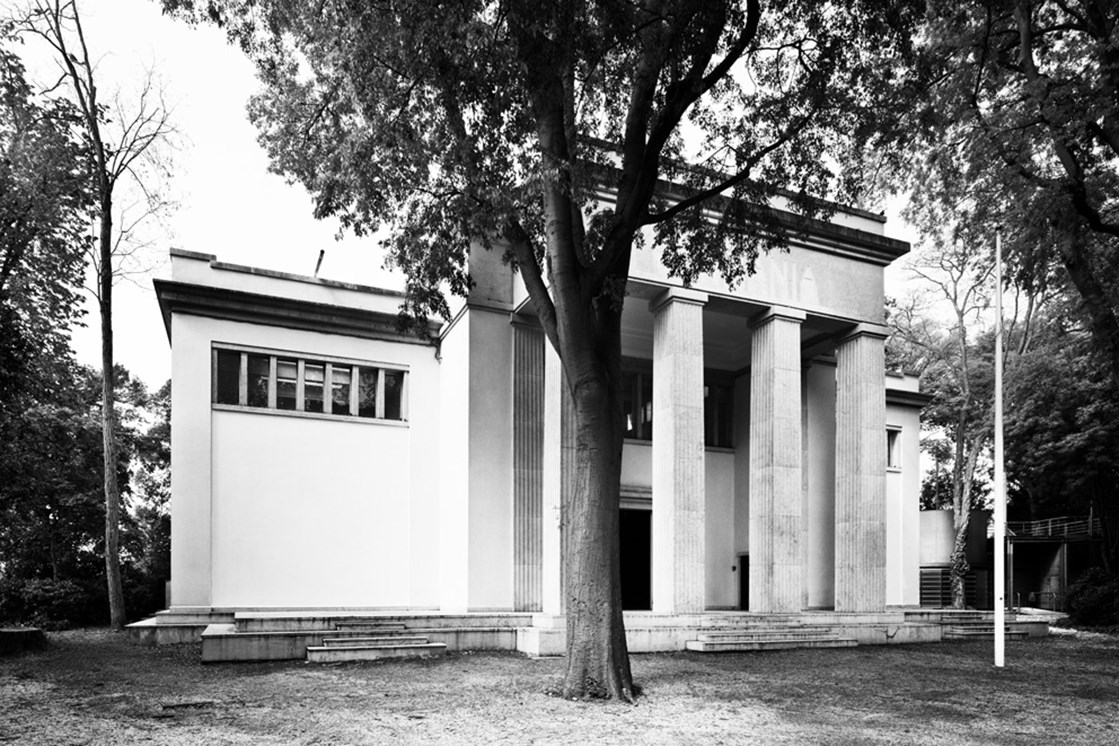
Architects: Daniele Donghi (1909), Ernst Haiger (1938-1939)
©Gabriele Basilico
Source: http://www.stylepark.com/en/news/germania-in-venezia/367115
For the São Paulo Biennale it was Lisette Lagnado, curator of the 27th edition, who in 2006 and in the scope of a curatorial project, raised questions about political topics such as the violation of territories and rights, the value of the difference between ‘homeland’ and ‘land’, ‘nationality’ and ‘exile’, who put an end to national representations and their expository boundaries. This definitive rejection, which today still remains unchanged, successfully brought to an end the latent discussion of the previous two decades. The more or less subtle post-nationalistic critique of the pavilion model has since been incorporated as a tendency in Venice, especially concerning the curatorial and artistic choices of the national pavilions. As examples, we can refer to the 2009 edition of the Biennale, which was marked by Germany’s invitation of Britain’s Liam Gillick; by the creation of the transnational neighbourhood by Denmark and the Northern Countries staged by Emlgreen & Dragset; by the negativity of Claude Lévêque, who signalled the institutional mourning of the French pavilion with black flags; or by Roman Ondák’s naturalism, encouraging native flora to invade and inhabit the Slovakian pavilion, engulfing it and making it disappear. Furthermore, in the 2013 edition, France and Germany decided to trade pavilions and invite artists that were not necessarily French or German, underlining the importance of international cooperation and communication and the cultural permeability of national borders, while Lithuania and Cyprus shared a single pavilion, project and curator, Raimundas Malašauskas.
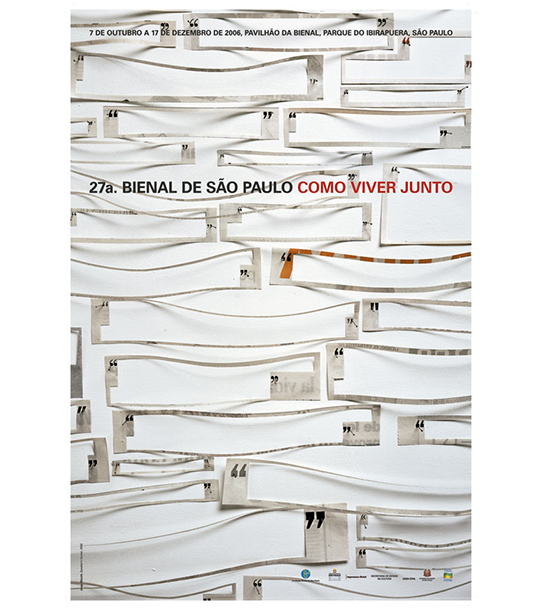
Authors: Rodrigo Ceviño Lopez (after the work Speaker's Corner by Jorge Macchi)
Source: http://imgs.fbsp.org.br/files/Cartaz_27.jpg
Other pavilions made similar choices, inviting curators and/or artists from different geographical areas to a dialogue, as was the case of the Cuban pavilions of 2013 and 2015, which presented Cuban artists confronted with international artists (Pedro Costa and Rui Chafes, among others, in 2013). But the vast majority of countries continued to follow the more classical tendency of presenting one or more artists that directly originated from within their borders, a formula which is generically considered obsolete by the critics of that milieu. In fact, various problems linked to the pavilion-organised exhibition format persist, the most immediate one being the discrepancy of visibility between those who possess a building within the Giardini, those who rent a space within the Arsenale, those who can be found spread throughout the city in fixed or temporary structures and even those particular cases like Palestine which, as a non-recognised state, is not permitted to have a national pavilion but across many editions of the Biennale has presented alternative spaces and formats that promote a reflection on its own political condition.
The national pavilions in Venice underwent profound changes, more so concerning their contents than the architecture of their buildings. The resilience and constant need to adapt have kept the Biennale alight as a preferential platform for the endogenous contemplation of the significance of a national participation in an international exhibition. A vicious tautology that has never been completely overcome and that has been unable to eliminate hierarchies between countries and participants, which the absence of architectural heterogeneity in São Paulo allowed to occur naturally. The elimination of the national compartments in the Ciccillo Matarazzo Pavilion became an argument for its modernity, regardless of the political sensitivity of the perpetuation of State sponsorship of the works of ‘their’ artists, as well as the allocation of revenue in the budgetary design of the Biennale every two years. It allowed São Paulo to move away from its original reference, Venice, to become closer in terms of its project, discourse and format to the post 1989 biennales. ◊
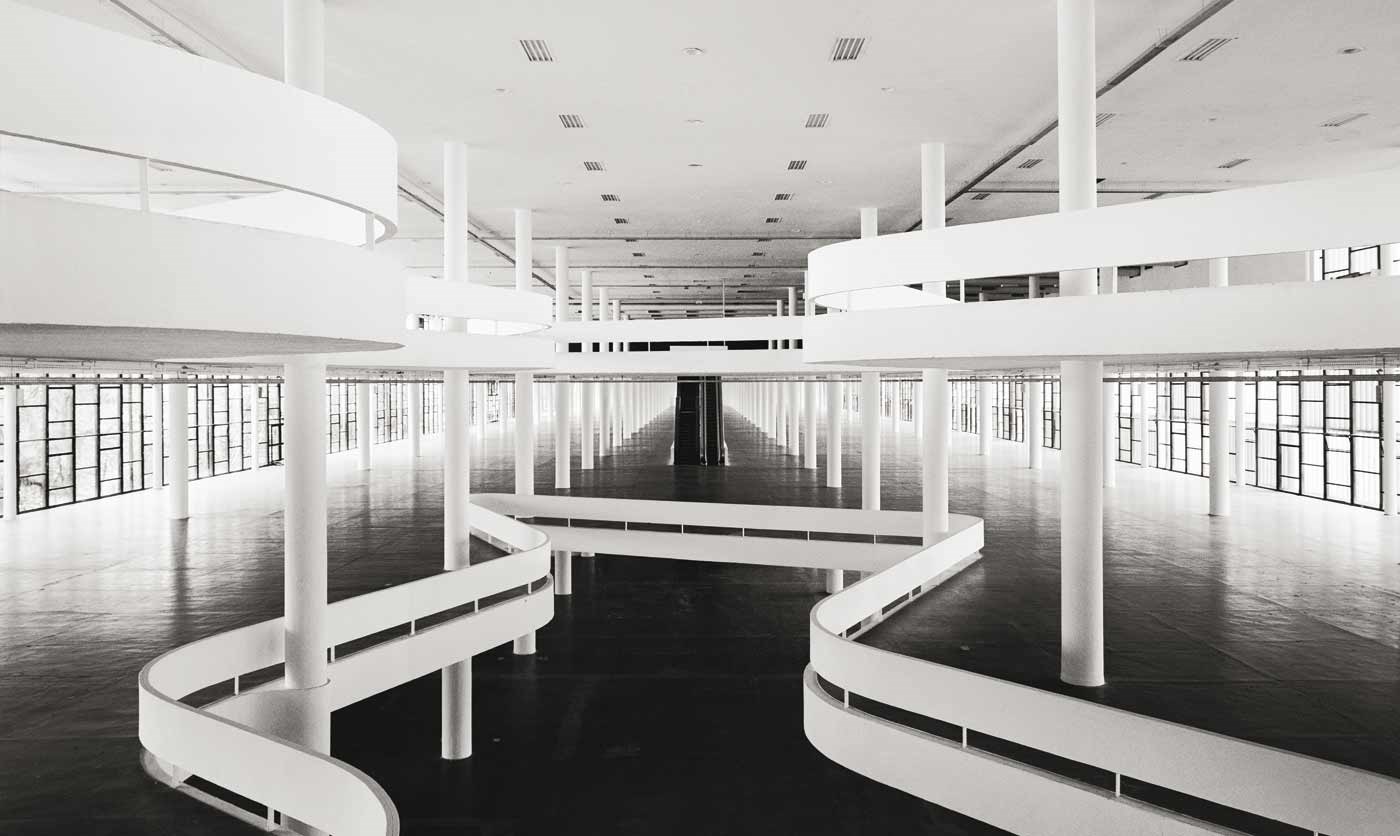
Source: http://www.bienal.org.br/content/pavimentos_01.jpg